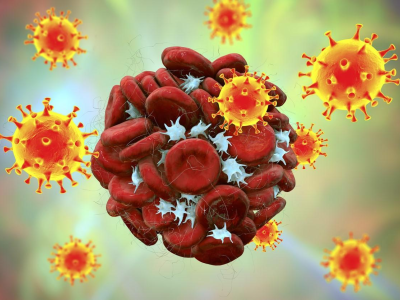The European Centre for Disease Prevention and Control (ECDC) late last week projected that the Omicron BQ.1 sublineage and its offshoots will likely fuel rises in COVID-19 activity in the weeks and months ahead.
In the United States, the Centers for Disease Prevention and Control (CDC) said last week that BQ.1 and BQ.1.1 are spreading relatively quickly, but still make up a small proportion of the overall variant picture.
As summer drew to a close, health officials warned that a variety of Omicron subvariants could drive a winter surge, but now there seem to be a few frontrunners, such as BQ.1 in Europe and XBB in parts of Asia.
ECDC: So far, no notable impact on epi situation
In an epidemiologic update, the ECDC said initial studies by Asian researchers suggest that BQ.1 has the ability to evade earlier immunity from illness and vaccines, but so far, there is no evidence that infections involving the subvariant are more severe.
Countries with the highest proportions so far include France, Belgium, Ireland, the Netherlands, and Italy, the ECDC said. However, it added that the proportions aren't high enough for the variant to have a noticeable impact on the epidemiologic situation.
Andrea Ammon, MD, PhD, the ECDC's director, urged countries to remain vigilant for signals of BQ.1 emergence and spread.
"Countries should continue to monitor COVID-19 case rates, especially in people aged 65 and older. Severity indicators such as hospitalisations, intensive care unit admissions and occupancy, and deaths should be monitored as well," Ammon said in a news release.
CDC, WHO keeping an eye on XBB
The CDC said last week in its weekly COVID data summary that BQ.1 and BQ.1.1 are "grandchildren" of BA.5. It also said it is keeping a close eye on XBB based on international reports, though it is still very rare in the United States.
The World Health Organization (WHO) last week also said it is closely watching XBB, which it said has the most immune escape properties of any SARS-CoV-2 variant so far. Singapore has reported a surge in cases, driven by XBB, but officials are seeing the start of a decline in cases. India, where XBB was first detected, is also seeing signs that XBB will become dominant.
In its latest projections last week, the CDC said the BA.5 proportion is dropping steadily and is now at 62.2%. It also reported notable rises in other Omicron subvariants, with BQ.1 rising to 9.4%, followed by BQ.1.1 at 7.2% and BF.7 at 6.7%.
The CDC said that, as of Oct 19, the 21-day average for new daily cases had declined more than 30% compared to the previous 21-day average. The 7-day average for COVID hospitalizations was down 4.4%, and the 21-day average for new COVID deaths declined by 13% compared to the previous period.
So far, 19.35 million people have received the updated bivalent COVID booster, which has been available since early September. However, it said only 49.5% of the eligible population has received any booster dose.
In other US developments, the CDC announced on Oct 22 that Director Rochelle Walensky, MD, MPH, tested positive for COVID and is experiencing mild symptoms. And White House officials said yesterday that President Joe Biden will received his updated COVID booster tomorrow and is expected to provide an update on the administration's pandemic efforts, according to NBC News.




















